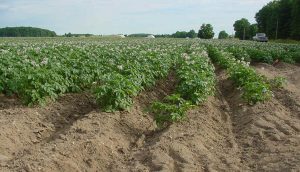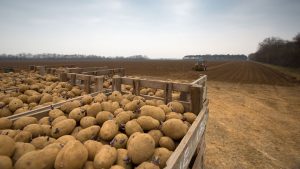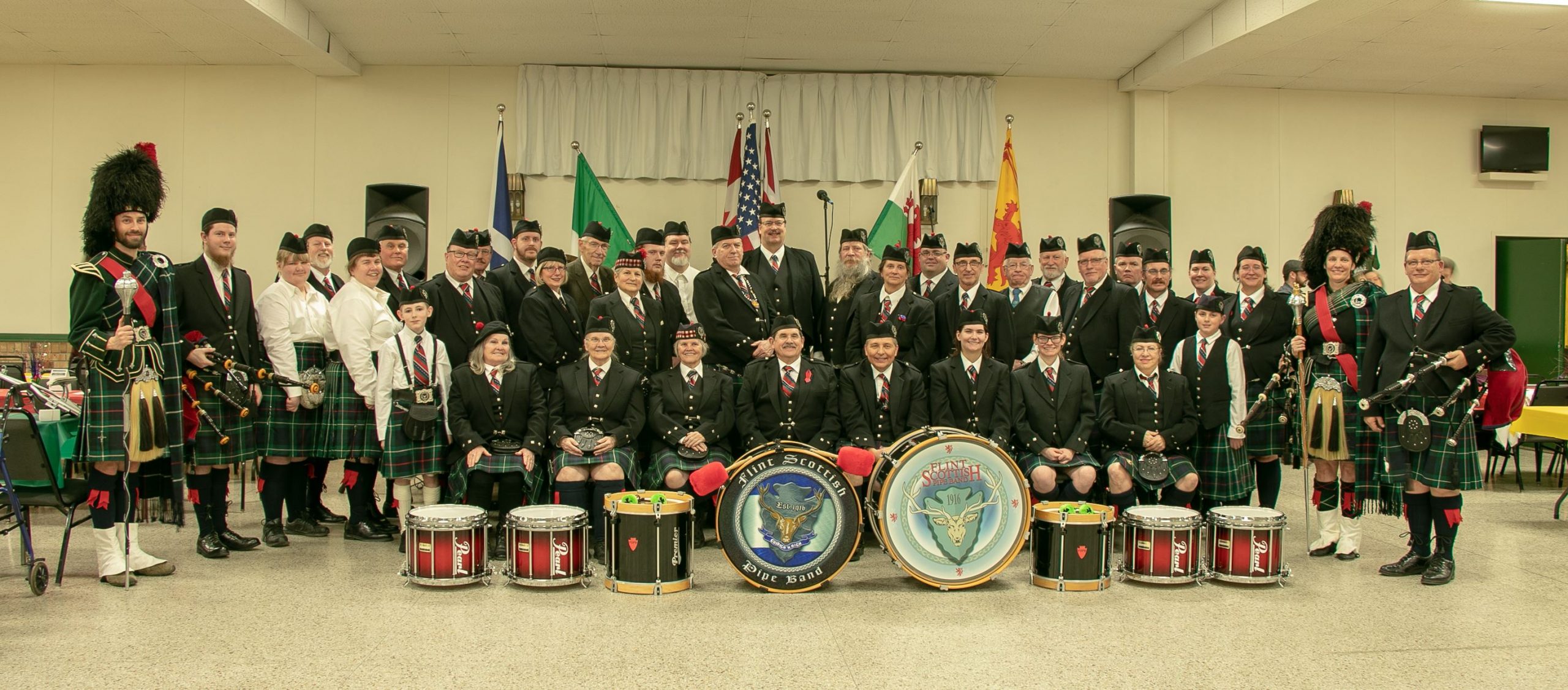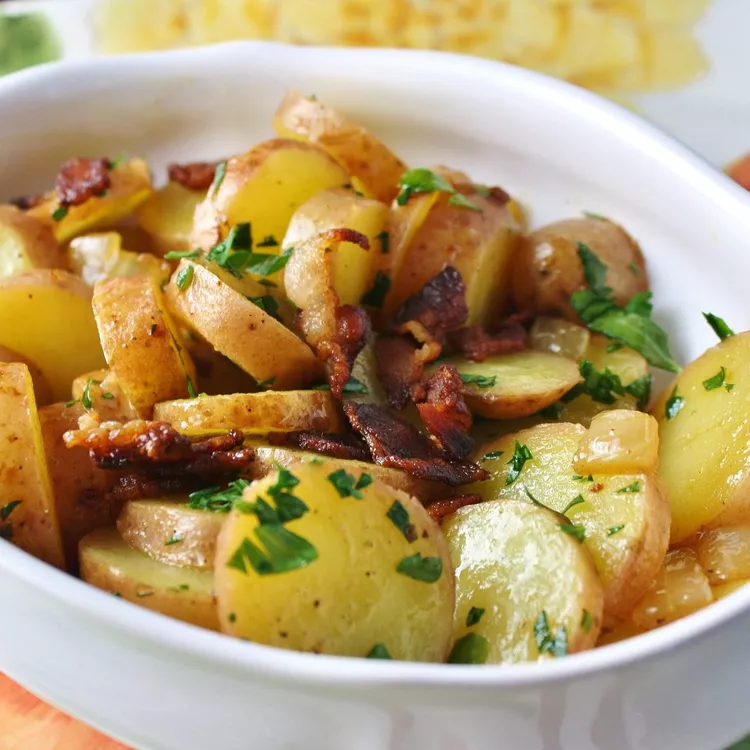The humble potato was domesticated in the South American Andes some 8,000 years ago and was only brought to Europe in the mid-1500s, from where it spread west and northwards, back to the Americas, and beyond.
The potato is the world’s fourth-most important crop after rice, wheat and maize, and the first among non-grains. What made the potato so irresistible was its unrivaled nutritional value, its relative easiness to cultivate as compared to some major cereals, its ability to easily navigate wars and tax censuses due to its knack for hiding underground from collectors, and in particular, its camaraderie with working men and women in the fields.

In 1532, the Spanish invasion brought an end to the Inca but not to the cultivation of potatoes. The invaders took tubers (the underground parts of the plant we call potatoes) across the Atlantic, as they did with other crops such as tomatoes, avocados and corn, in what historians call the Great Columbian Exchange. For the first time in history, the potato ventured beyond the Americas.
European long summer days confused the potato plant, and tubers didn’t grow during the favorable warmer months; instead, they did so in the autumn, too close to the frosty early winter days to survive. The first decades of planting in the Old Continent proved unsuccessful.

But then potatoes found better conditions in Ireland, where a cool but frost-free fall gave the crop enough time to mature after its introduction from Spain in the 1580s. A century of farmer selection produced a variety that set tubers earlier in the summer, and the potato took the mantle it would carry for centuries: the staple crop of peasants.
From the British Isles, potatoes spread eastwards across peasant fields in Northern Europe, writes Lang: they were found in the Low Countries by 1650, in Germany, Prussia and Poland by 1740 and in Russia by 1840s. After farmer-selection filtered out those varieties and genes less adapted to local climate conditions, it flourished.

The Statistical Account of Scotland records a few potato gardens around Edinburgh in 1725-6, tells us potatoes were first cultivated near Stirling in 1739, and adds that they were not known in the Highlands and Islands before 1743. Initially met with suspicion by Scotland’s farmers and crofters, the potato was soon widely embraced. It grew well in poor soil and kept hunger at bay.
Then, in 1845, the blight came. The following year, the crop failed completely. Famine spread through the Highlands, the Hebrides, Orkney and Shetland. It could have caused devastation equal to that seen in Ireland, but aid was given by landowners, the Free Church and, eventually, the government.

Michigan has a long tradition of potato production. Because of our cool, moist climate and deep, sandy/loamy soils, potatoes grow well here. Early potato farms were on land left after the hardwood timber was cut. “When the pioneers migrated to Michigan, the potato was one of the very first crops they planted,” explains Val Berryman, curator of history at the MSU Museum. “The state’s excellent climate and sandy loam soils were ideal for potato cultivation.”
Michigan is the nation’s leading producer of summer or “new” potatoes (with red skins) and potatoes for chip processing. Harvest begins in July and ends in October. Montcalm and Bay counties are major Michigan producers of potatoes.

The most popular type of Michigan potato is the round white, which is used as a fresh market potato and for chips. The table varieties of round whites are well liked for their moistness and soft texture, and russets are preferred for their excellent baking quality. Michigan also has cultivated a market for yellow or “golden” potatoes. These have a unique flavor and may be prepared in many ways.
Today, Michigan’s potato production ranks about 8th in the nation. Michigan potato farmers produced more than 13.8 million hundredweight of potatoes in 1995, on 46,000 acres. The majority of Michigan potatoes are white potatoes and are sold for fresh table use or processed for potato chips. Snowden, the leading white variety, comprised 34.7% of all planted acres. The remainder are virtually all Russets and used for french fries and other frozen products.

The 68th Munger Potato Festival, hosted by The Munger Volunteer Firemen Corp, is right around the corner. It is just a good ol’ time with USA Demolition Derby officiating Mungers’ Figure 8 and Demo Derby. There is something for everyone! Whether it is the 5k Spud Run, Cornhole Tournament, a hometown parade, or great bands in the entertainment tent. It will be SPUDTASTICALLY awesome time for the whole family.
So head to Munger Michigan, July 27th – 30th, there is something for everyone, and plenty of free potatoes to go around.
https://mungerpotatofest.com/events/entertainment/event_schedule/
SUNDAY JULY 30TH
Chicken BBQ – Food Tent
Hosted by – Trinity St. James Church
11:00 AM (Quantities limited)
Amusements
12:00 PM – 8:00 PM | $15 all Day Ride pass
Parade
1:00 PM – Until the last float passes by
Potato Give Away After Parade
Entertainment Tent No Charge for Admission
Kowalski Brothers Polka Band 1:00 PM – 5:00 PM
Elvis Tribute w/ Bill Lindsay 5:00pm – 8:00pm
Works Cited
Ortiz, Diego Arguedas. “How the Humble Potato Changed the World.” Www.bbc.com, 3 Mar. 2020, www.bbc.com/travel/article/20200302-the-true-origins-of-the-humble-potato#:~:text=The%20humble%20potato%20was%20domesticated.
“Potatoes in Michigan.” Project.geo.msu.edu, project.geo.msu.edu/geogmich/potatoes.html.
“Scottish Food through History – HES Blog.” Historic Environment Scotland Blog, 6 Dec. 2017, blog.historicenvironment.scot/2017/12/scottish-food-history/#:~:text=The%20Statistical%20Account%20of%20Scotland.
The Potato in Michigan – MSU Museum. museum.msu.edu/?exhibition=the-potato-in-michigan. Accessed 25 July 2023.



Leave a Reply